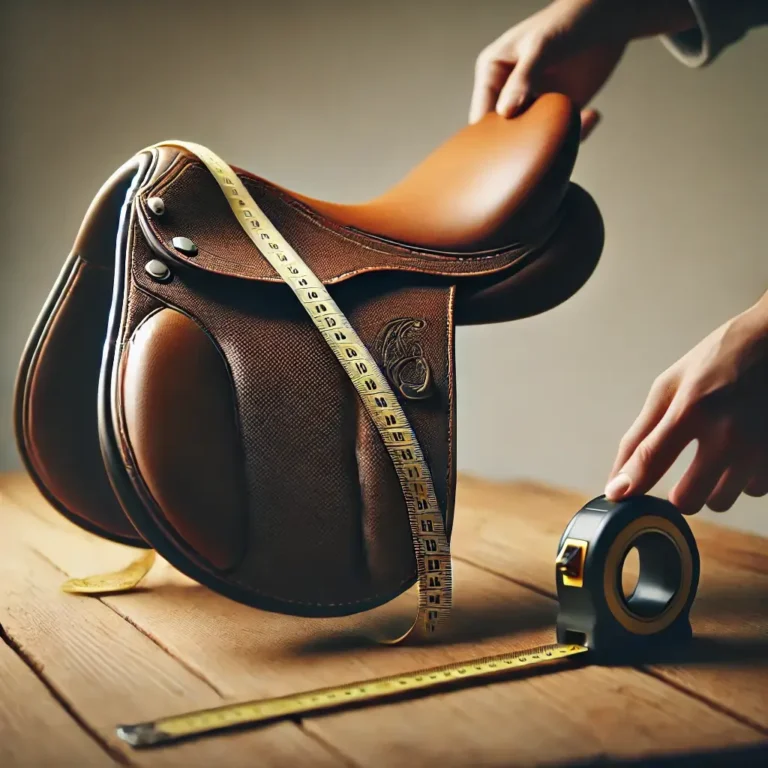How to Fix Peel and Stick Wallpaper Easily (December 2024)
Introduction
Peel and stick wallpaper can transform a room, but if done wrong, it might lead to minor issues that affect its look. David, a DIY enthusiast, shared his real experiences about tackling these problems, and his tips provide insight into creating a professional-looking result. Knowing the tricks to effectively fix common problems like air bubbles, deformations, or misaligned patterns is important. Here, I’ll share some useful tips to help you avoid these pitfalls and keep your project on track.
Before you start, it’s important to check the wall’s surface to avoid bumps or gaps that could lead to bubble formation. During installation, keep a sharp eye on alignments and ensure the panels fit tightly. A handy tool like a squeegee can effectively smooth out air bubbles as you go. If you notice minor missteps, address them as soon as they happen. Adding extra time to measure the wall’s height and plan the order of the panels will save you much trouble later. Even when patterns are hard to match, taking it step by step makes the process easier and avoids repeated errors.
Let’s say you’re using peel and stick wallpaper for the first time. Start small, perhaps on a single wall, to learn the seamful and seamless approach. With practice and a bit of patience, you can tackle larger spaces and create an ultra polished finish.
Common Issues with Wallpaper: Improper Wall Preparation
One amazing way to ensure your peel-and-stick wallpaper stays put is by properly preparing the wall surface. A low-grade or textured surface, like popcorn or knockdown walls, often leads to failure of the adhesive. These irregular textures don’t allow the contact between the wallpaper and the wall to be strong enough, causing peeling or deformation over time. From my experience, I learned the hard way that even removable wallpaper struggles on improper surfaces, especially those not sanded smooth. Always trust the instructions on the packaging, as they often include a disclaimer about textured or damaged walls being less suitable.
To avoid this awful situation, start by adding extra preparation steps. Brush the wall clean, fill any holes or cracks, and ensure the surface is smooth and dry. If you’re working on textured walls, like orange peel, a coat of primer can help. For severely textured areas, sanding or skim-coating is essential. This allows the wallpaper to stay attached for the long term. Don’t just slap it on and hope for the best—it’s worth the effort to put in some prep work. Always keep a repair cart and materials handy for removal or adjustments, just in case.
Incorrect Wall Measurements
Measuring your wall the wrong way can lead to issues with peel and stick wallpaper. Short measurements might leave sections uncovered, while oversized orders waste material. To get it right, first Measure the overall space using a tape measure. Break down complex areas into smaller sections for accurate dimensions. Always double-check the exact measurements—Measure twice, cut once.
If you’re unsure about the square footage or layout, use an app or online tool to calculate it. You can also inquire about customer service help. Some services let you upload photos of your area and provide suggestions. Before placing your order, confirm that your dimensions will properly cover all areas without gaps. A quick phone call to verify might save a lot of trouble later.
Misalignment Issues
Fixing misalignment when installing peel and stick wallpaper requires a detail-oriented approach and plenty of patience. Start by opening and carefully checking the panels before you begin. If the designs don’t match properly or the process feels off, stop and rethink the next steps. Thought should be given to the position of each panel, starting at the top and working toward the floor. Use your hands to gently adjust the panel while removing the backing paper, ensuring the alignment matches perfectly from the top to the bottom.
When correcting small misalignments, use evenly applied force by gently pulling the material. This can help manage tension and ensure the panels don’t stretch or tear. If adjustments are needed, work in horizontal, parallel directions to avoid creases or gaps. For irregularities on the walls, such as bumps, depressions, or imperfections, a proper assessment prior to installation is key. Sanding, priming, or even applying a skim coating ensures an even surface, which is especially important for DIYers and pros alike. If the wallpaper still won’t align, consider removing and reapplying to avoid a frustrating installation.
Wallpaper Falling Off for “No Apparent Reason”
If your removable wallpaper starts to fall off for “no apparent reason,” it’s essential to take a closer look at potential issues with the wall surface or the wallpaper itself. One common cause is an inadequate surface—walls that are textured, dirty, or dusty can prevent the wallpaper from bonding properly. Before installing removable wallpaper, always clean the surface thoroughly with rubbing alcohol to remove any accumulated dust or adhesive residue. If the wall was recently painted, ensure the paint is fully cured—this usually takes about two weeks—before applying the wallpaper to avoid permanent damage or lifting.
Sometimes, the problem lies in improper handling during the installation process. To achieve successful installation, take the crucial step of using a smoothing tool to firmly press the wallpaper onto the wall, ensuring no bubbles or scuffs are left behind. Avoid low-grade materials that may emit fumes or fail to stick properly over time. For bathrooms or areas with excessive humidity, consider moisture-resistant options or apply a stain-blocking primer to the wall before installing. If drastic temperature changes are causing the wallpaper to lift, use a heater or maintain a stable environment to prevent swift shifts in temperature. When all else fails, double-sided tape or shelving can serve as a temporary fix to hold the wallpaper in place without damaging the wall decor.
Adding extra glue to peel and stick
When it comes to fixing peel and stick wallpapers, adding extra glue can sometimes feel like the easiest solution, especially when your wallpaper is not sticking properly. However, before you grab the glue bottle, it’s important to understand the potential risks and how to address the issue correctly.
If your wallpaper is falling abruptly or forming bubbles weeks after installation, the problem might lie with the backing paper or a progressive reaction caused by the materials. Many vinyl peel and stick wallpapers are designed to work without glue, so adding extra paste can trigger unwanted chemical reactions. This can lead to foul odors, discoloration, or even damage to the wall itself. For this reason, it’s not recommended to rely on glue for a fix, as it might worsen the appearance instead of solving the problem.
If you find yourself unable to restore the wallpaper to its perfect condition, consider consulting a professional installer. They often have better insights into these issues and can help with installation inquiries. Unfortunately, many DIY enthusiasts become victims of these problems because they opt for glue instead of addressing the root cause. To avoid such mistakes, check the type of wallpaper used and ensure it was installed on a clean and primed surface, just as you would with traditional wallpaper. This simple precaution can save you from unnecessary hassle and expenses.
Horizontal installation
When it comes to horizontal installation, things can get extremely tricky if you don’t have the right approach. Unlike vertical alignment, gravity doesn’t naturally work in your favor, making it difficult to keep the wallpaper straight. From my experience, it’s a good idea to start with small spaces before tackling larger walls. When you’re working on aligning the strips, ensure you peel off only a little backing at a time. This helps you adjust without creating bubbles or creases. Stick to a level tool to ensure accuracy, and don’t rush—taking your time can make the process much smoother. Trying a new method, like starting from the middle instead of the top, can also be effective for maintaining balance.
The wrong professional
If your peel and stick wallpaper isn’t staying put, it might not be the product’s fault—it could be the fault of hiring the wrong professional. A good wallpaper installer is key to a smooth and successful outcome, but not every handyman or painting expert is equipped to handle the unique challenges of peel and stick.
Many people assume a traditional wallpaper installer is the best choice, but that’s not necessarily true. The process requires a specific skill set, like ensuring the walls are properly painted, sealed, and free from wet paint fumes. Without this, the wallpaper can wrinkle, slide, or become lifted, turning the entire project into a disgrace.
Before starting, always consult a professional who is comfortable with peel and stick techniques. They should be willing to assess the surface, repair any deformation, and test the products for proper adhesion. Simply asking if they’ve worked with peel and stick before can save you frustration.
I once made the mistake of hiring someone who treated the backing like traditional wallpaper and ignored the instructions. They applied a wet glue that caused the whole project to fail. The panels slid off, the adhesive weakened, and the papers had to be removed and tossed. Always hire someone dedicated to providing quality customer experience, who guarantees the best look and understands the intricacies of wallpapering.
Mastering the Art of Repeats
When wallpapering, understanding the repeat rate is crucial to ensure the design flows seamlessly. I learned this the hard way while working on a half wall in my living room. I wasn’t thinking about the repeat information and ended up with an issue where the patterns didn’t match perfectly. It was a silly oversight that cost me a lot of time.
Here’s a tip: always check the repeat rate before purchasing. Manufacturers usually include this detail, and if not, their customer service can help. You’ll likely need more rolls than you expect, especially if you’re working with a complex design. When cutting a new panel, align it to ensure the space and pattern are continuous. Even if it means chopping into a remnant, the goal is to generate a flawless look.
If you miscalculate and run out of wallpaper, don’t panic. A quick call to the customer service team can magically solve your problem by helping you find a matching roll. It might feel tedious at times, but it’s worth the effort to avoid mismatched seams somewhere on your walls. Following these steps makes the match process feel like second nature, leaving you with a perfect finish every time.
Final thoughts and silver lining
When tackling the challenge of fixing peel and stick wallpaper, it’s easy to feel intimidating, but here’s a fresh way to look at it. Sometimes, just like watching a compelling docu-series on Netflix, the process opens your eyes to the small adjustments that make a big difference. My opinion, after hours of experimenting, is that patience and preparation can transform a frustrating task into an enjoyable one. Whether you’re a pro installer or someone doing this for the first time, these tips will help ensure your walls are smooth and the final result is something to be proud of.
Think of this as your DIY vacation. Start by ensuring the surface is clean and smooth, with no dust or bumps to create issues. To avoid alignment problems, work in a room at a steady temperature (ideally 80º, with the AC on). Before you jump in, gather all the right tools—scissors, a smoothing tool, and a tape measure. Testing samples on a small section of the wall can save hours of frustration and reveal how the material reacts. If the idea of tackling this alone feels daunting, don’t hesitate to seek advice from moms or a trusted installer. It’s perfectly normal to struggle at first, but the silver lining is that the art of repositioning becomes easier with practice.
Whether you’re fixing something for your home or experimenting with designs like Koko Art Shop’s trending patterns, remember that even the best wallpaper can suffer small flaws. Treat these moments as learning episodes, and the happy outcome will be worth the effort. It’s all about being patient and finding joy in the process while creating something you’ll truly enjoy.





